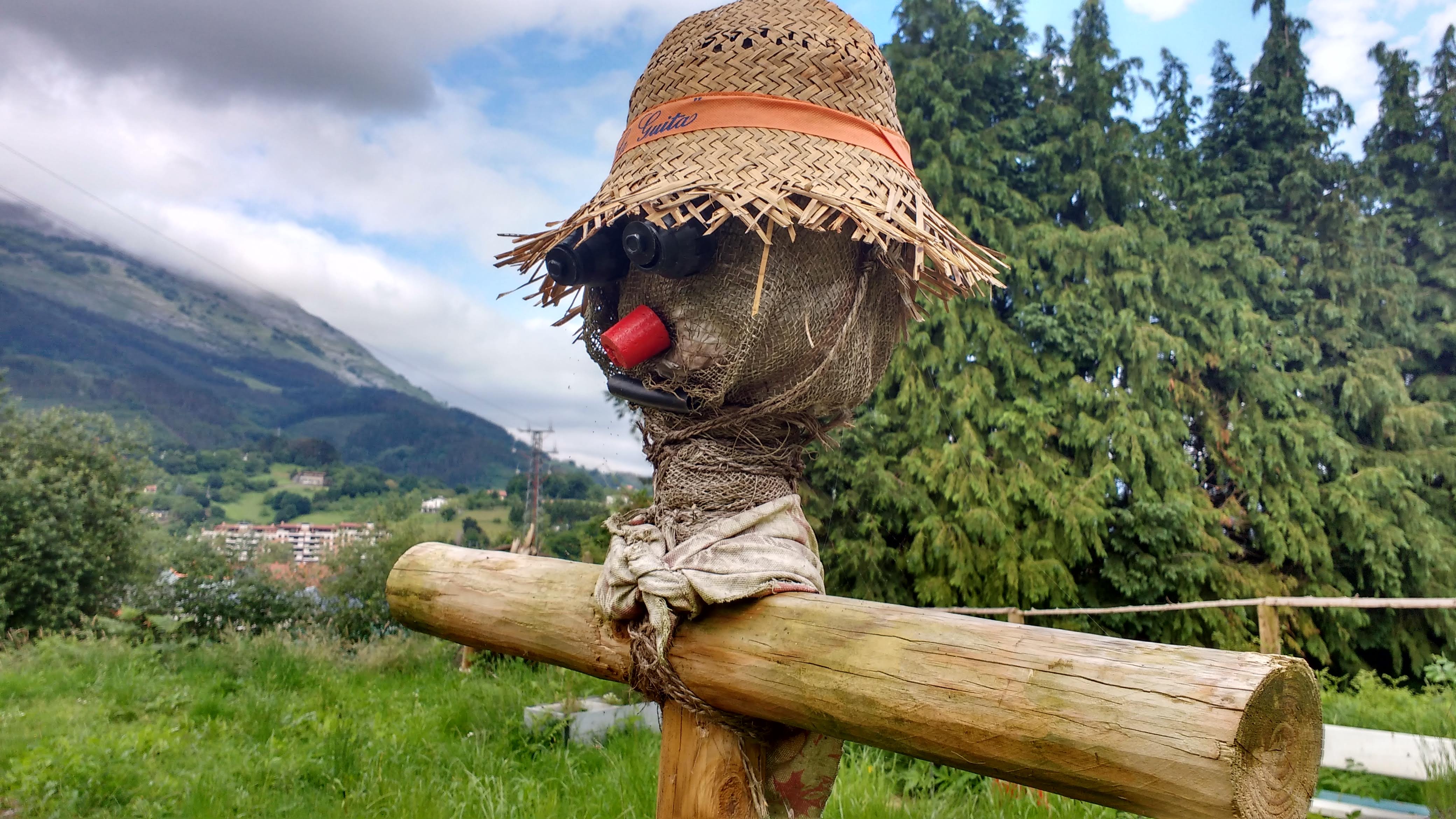Archives

Great fields and strips in the neighbourhood of Ahedo. Valley of Carranza (Bizkaia), 1965. GeoEuskadi Viewer.
The so-called llosas were a convenient form of land arrangement and use characteristic of the Valley of Carranza (Bizkaia) but with wide geographical variations. Adjacent flatlands and gentle slopes within each neighbourhood in the Valley were grouped together and enclosed for cultivation in what was known as a llosa. Each block of arable land was divided into individual strips, those closer to the farms, or piezas, being devoted to maize, also wheat more formerly, and other crops; the more remote locations served as grazing land and were thus called campas. (more…)

Scarecrow. Azkoitia (Gipuzkoa), 2018. Idoia Tolosa. Labayru Fundazioa Photographic Archive.
Placed in open cultivated fields, vineyards and fruit groves, homemade humanoid scarecrows have been a common way to protect freshly broadcast seed, growing crops and fruit harvests from birds, though in recent times are being partly substituted by more effective methods. They have been mostly used in fields of wheat and maize, and still guard young onion plants, turnip intended for seed, broad beans and green peas with filled pods… Several dummies might be needed for large areas. In fields of crops they are installed in June, and in vineyards in September; fruit trees with abundant ripe fruit, especially cherry trees, are also protected. Common names for ‘bird scarers’ are espantapájaros, in Spanish, and txorimaloak, txori-jagoleak or kusoak, among others, in Basque. (more…)

